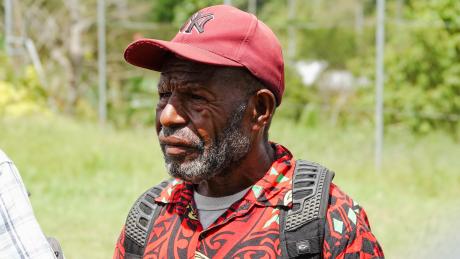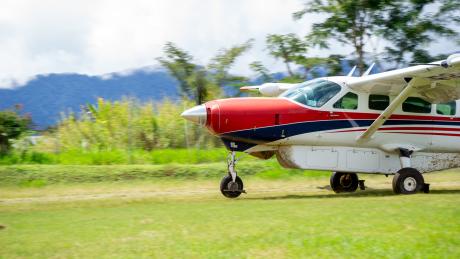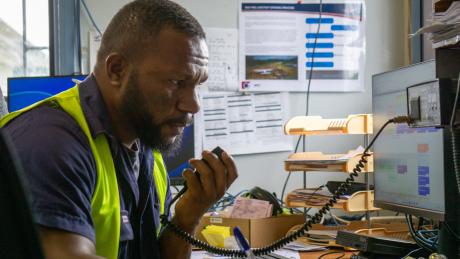
The last two decades have seen the mobile phone network spread across many areas in Papua New Guinea. But do isolated people still rely on the humble high frequency radio? We talked to Pastor Kimin Mauwe, in the remote community of Karimui, to find out.
Story by Matt Painter
“When phones are down, I still need to give weather reports and passenger amounts to MAF,” said Pastor Kimin Mauwe, MAF’s agent in Karimui.
“To give patients details, or get details for transport of a dead body, everything, many things – the radio still helps us.
“MAF look at the bookings, go to this side and that, each of the different airstrips, and help pastors, missionaries, the community – carrying peanuts, cacao, rice – everything. MAF helps us.
“Many years ago, in 1951 when MAF came to this country, they came with radio, and it helped us. And today, the phone has come, other things have come, but radio is still the best thing to help us.”
According to Pastor Kimin, who lives in a community that is two days’ walk from the nearest road, the simplicity and reliability of a solar-powered radio system is unrivalled.
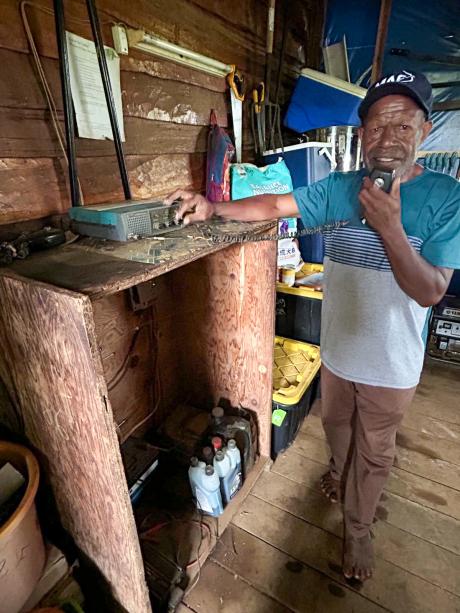
“Some of the time the phones are down for one or two weeks. Sometimes, the helicopter can’t land on the mountain to bring fuel to the mobile phone tower installation.
“In a year, this happens five to eight times or so. When we don’t have cell phone service, and problems arise, I go quickly and use the radio.”
But for remote communities it’s not just about reliability. When it comes to costs, a transceiver radio is a ‘no-brainer’ for people with limited income.
“With regards to the costs of radio, for one time it will be a bit expensive. To buy a battery, a handset, aerial, all the other things, the price will be a bit high,” he said. “But when you buy, it’s just once, and the cost is not much. We can then use it for free. Talking, giving bookings to MAF – this doesn’t eat up your money.
“So, the cost of radio is low. But the phone eats up a lot of money.”
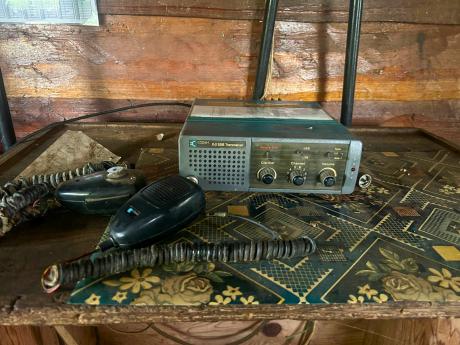
For a remote community in Papua New Guinea, contact with the outside world is not a luxury, it’s a critical lifeline that must be maintained.
“When we have an emergency, we call MAF Technologies, Alpha 899, and they help us to find a plane,” said Pastor Kimin. “For women about to give birth, we call, and the plane comes. For men who roam around and have cut their hand with a tomahawk, we call, and the plane comes.”
Today, we in the bush, we still need radio.
Justina Martin works with MAF Technologies, standing by for calls for remote communities.
“If I receive a medical call and they use the callsign for MAF Technologies Alpha 899, medical, I feel that they really need help, as soon as possible. They need help because there is no hope for them. We are the only hope to help them,” she said.
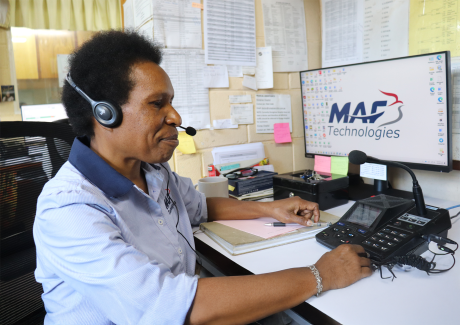
Pastor Kimin said: “So, today, we in the bush, we still need radio. Radio is the big blessing today. MAF still uses radio, and we still use radio. For us in the bush, it’s our main form of communication.
“The MAF Technologies people have remained faithful to their ministry to care for us.”
